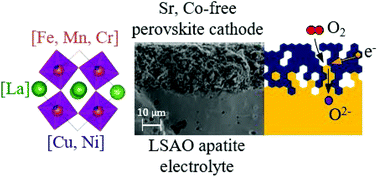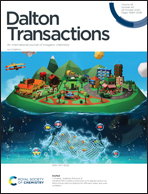Suitability of strontium and cobalt-free perovskite cathodes with La9.67Si5AlO26 apatite electrolyte for intermediate temperature solid oxide fuel cells
Abstract
Aluminium-doped lanthanum silicate (LSAO) apatite-type compounds have been considered as promising candidates for substituting yttria-stabilized zirconia (YSZ) as electrolytes for intermediate temperature solid oxide fuel cells (IT-SOFC). Nevertheless, not many materials have been reported to work as cathodes in a LSAO apatite-based cell. In the present work, eight different strontium and cobalt-free compounds with a perovskite-type structure and the general composition LaM1−xNxO3−δ (where M = Fe, Cr, Mn; N = Cu, Ni; and x = 0.2, 0.3) have been tested. This study includes the synthesis and structural characterization of the compounds, as well as thermomechanical and chemical compatibility tests between them. Functional characterization of the individual components has been performed by electrochemical impedance spectroscopy (EIS). Apatite/perovskite symmetrical cells were used to measure area-specific resistance (ASR) of the half cell in an intermediate temperature range (500–850 °C) both with and without DC bias. According to its electrochemical behaviour, LaFe0.8Cu0.2O3−δ is the most promising material for IT-SOFC among the compositions tested since its ASR is similar to that of the traditional (LaxSr1−x)MnO3 (LSM) cathode.



 Please wait while we load your content...
Please wait while we load your content...